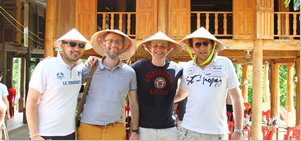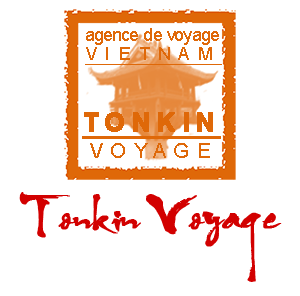As an ancient capital of Lane Xang Kingdom, Luang Prabang is one of the most outstanding destinations in Southeast Asia
Introduction
According to legend, the first name of Luang Prahang was Muang Sua (so called in the 8th century by King Xua), later Xieng Dong and finally Xieng Thong. During the reign of King Fa Ngum (1354-1372), the cities of Xieng Dong and Xieng Thong were combined and renamed Luang Prabang, the city of Golden Buddha. Sacred capital in 1354, Luang Prabang has given this title to Vientiane in 1560 before returning royal capital between 1947 and 1975 while the administrative capital remained Vientiane. Legend has it that, the site of the city was chosen by two hermits who, finding that Mount Phousi like a grain of rice, decided to settle there.
Today, Luang Prabang is a quiet city with 16,000 inhabitants. The city is located on a sort of peninsula at the influence of the Mekong and Nam Khan and dominated by Mount Phousi. It houses about thirty monasteries and the former royal palace. Relaxation and beauty of the place invite you to stroll and stay a few days. The restoration of the city is done according to instructions provided by the Heritage House and retains its former capital.
Tourist attractions
National Museum or former Royal Palace (Thanon Sisavangvong)
The royal residence was built between 1904 and 1909 during the reign of King Sisavangvong. Architecture is a classic French-Lao blend. It is now the National Museum and houses the throne of the King of Luang Prabang and many religious and royal treasures, including the famous Pra Bang, the original Ceylonese Golden Buddha provided by Khmer King Fa Ngum in Praya Sirichanta in 1359.
Wat Xieng Thong Temple or the Golden City (Mekong bank, end of the peninsula)
This is the most important and beautiful temple in Luang Prabang presenting the purest Lao style. Build in 1559-1560 by King Setthathirath; it is located on the peninsula formed by the meeting of Mekong and Nam Khan River. Wat Xieng Thong remained under royal patronage until 1975 and as the Royal Palace, it was accessed directly from the river whose pier has an impressive staircase decorated with dragons. Wat Xieng Thong actually houses several small chapels, the Vihan, the chapel of the funeral Char, standing Buddha Chapel and Red Chapel.
Wat Xieng Thong is a center of celebration of the Lao New Year “Pimai”. Every year, a procession of senior vats in Luang Prabang takes place there.
Wat Mai
Built in 1821 during the reign of King Manthatourath, its construction lasted 70 years. It is the residence of Phra Sangkharath, the Patriarch and the highest dignitary of the Buddhist clergy. It is in this monastery that exposed the picture of Luang Prabang on the occasion of Pimai celebrations (Lao New Year). This temple is also interesting because of its top five slopes and its low gold reliefs telling the story of the last reincarnation of Buddha.
Wat Visoun or Wisunalat
Built between 1500 and 1520 during the reign of King Visounnarat, it once housed the Prabang, religious symbol of the kingdom. Burned in 1887, it was rebuilt in 1898 and is now the Museum of Religious Arts. Within its wall is the That Makmo, Watermelon temple which owes its name to its very particular form. This wat contains a fine collection of wooden Buddha dating from the 16th century. It is also known under the name of That Patum, Lotus Temple. It is in this monastery that Pimai ceremonies end in Luang Prabang.
Mount Phousi (Thanon Sisavangvong Entrance)
Opposite the Palace, Mount Phousi is covered with several temples including the That Chomsi reached by a staircase of 328 steps. Built in 1804 and restored in 1994, it is both the symbol and center of the city. It is this temple that share the procession leading down into the city during Pimai – Lao New Year (in April). Halfway on the side of the mountain, some temples and caves shelter some relics and Buddha images. The drums that resonate every three hours to the top of Mount Phousi is one of the traditions of Luang Prabang and can be heard kilometers away…
Heritage House (Facing Wat Mai)
The Heritage House is installed in the premises of the Provincial Department of Information. A cooperation program between the cities of Chinon (Indre and Loire) and Luang Prabang was set up under sponsorship of UNESCO. The Heritage House allows a different view of the city. Indeed, studies have been undertaken on this site regarding the vegetable, architecture, roads, wetlands and traditional materials.






